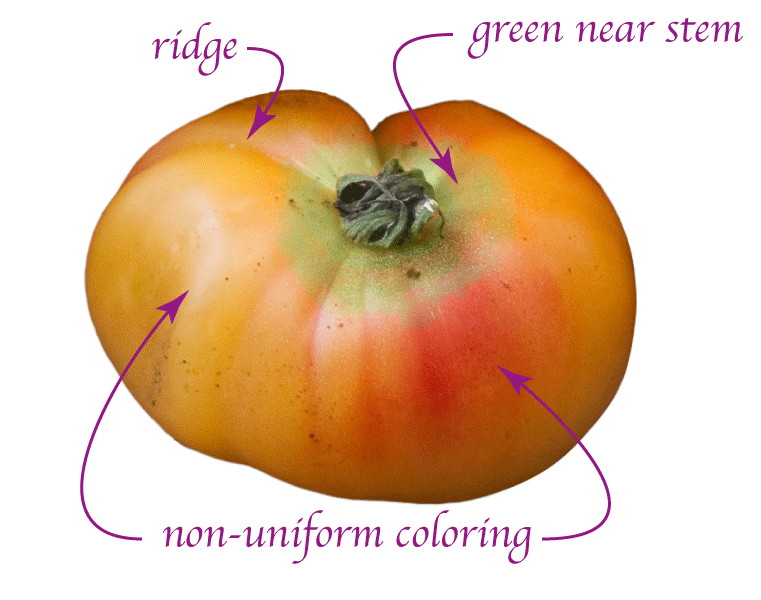Ugly tomatoes taste better

Wet cardboard and a tomato should not taste the same, but few of us have been fortunate enough to experience the difference. A tomato, in addition to water and cellulose, has sugars, acids, and aromas that distinguish it from wet cardboard. I blamed supermarkets demanding firm, but not very ripe, fruit for the cardboard-like tomato offerings, but a recent article in Science explains that the problem is a malfunctioning gene.
Through most of the twentieth century, tomatoes have been selected to ripen uniformly. Heirloom tomatoes often have small patches of green and pale red once ripe, especially around the stem. These patches do not indicate lack of flavor or ripeness, but reflect how the sugar producing regions of the tomato fruit are distributed.

Just like we have mitochondria in our cells that burn sugar to create the ATP molecule that power everything in our bodies, plant cells have plastids. Like mitochondria, plastids have their own DNA and are inherited from only one parent. Green plastids, the chloroplasts and most famous of plastids, use light to split water into hydrogen and oxygen to fuel the production of the sugar glucose. Plastids of other colors, which give leaves their fall colors and flowers and fruits their many hues, produce carotenoids (a type of unfolded chlorophyll, but providing other colors) together with many byproducts that add aromas and flavor to the plant.
The team of researchers from UC Davis, Cornell, and Spain discovered that the pretty tomatoes we get at the supermarket have a genetic mutation causing them to have the desired uniform color but which also lessens the formation of those sugar producing chloroplasts. The culprit is SIGLK2, a Golden2-like (GLK) gene they identified in tomatoes. This gene produces a protein similar to the gene Merle Jenkins described in 1926 as being responsible for the corn stalk going from being green to a golden green with a cast of silver (his words for the color). The product of SIGLK2 is one of many different proteins that help control the photosynthesis in the plants. Without it there is less photosynthesis in the fruit (but not the leaves, as these get by with SIGLK1), which means less sugar and by-products, and therefore less taste and flavor for the fruit.
It is rare that a supermarket tomato is picked ripe. Often they are produced in greenhouses and picked while still green, transported, and when close to being placed for sale, treated with ethylene to trigger the ripening process. This artificial ripening is done by the fruit without the extra energy from the plant resulting in only a fraction of what the sugar and aroma compound production could have been.
In trying to create prettier fruit that looks riper, breeders killed the source of sweetness in the tomato. Tomatoes with SIGLK2 have more chloroplasts producing more sugars than the varieties that stock most supermarkets. And as any cook knows, when something lacks taste, or the taste is too bitter, no amount of aromatics can fix it. So next time your picking a tomato, look for signs of SIGLK2 working: a tinge of green at the stem and patchy color.